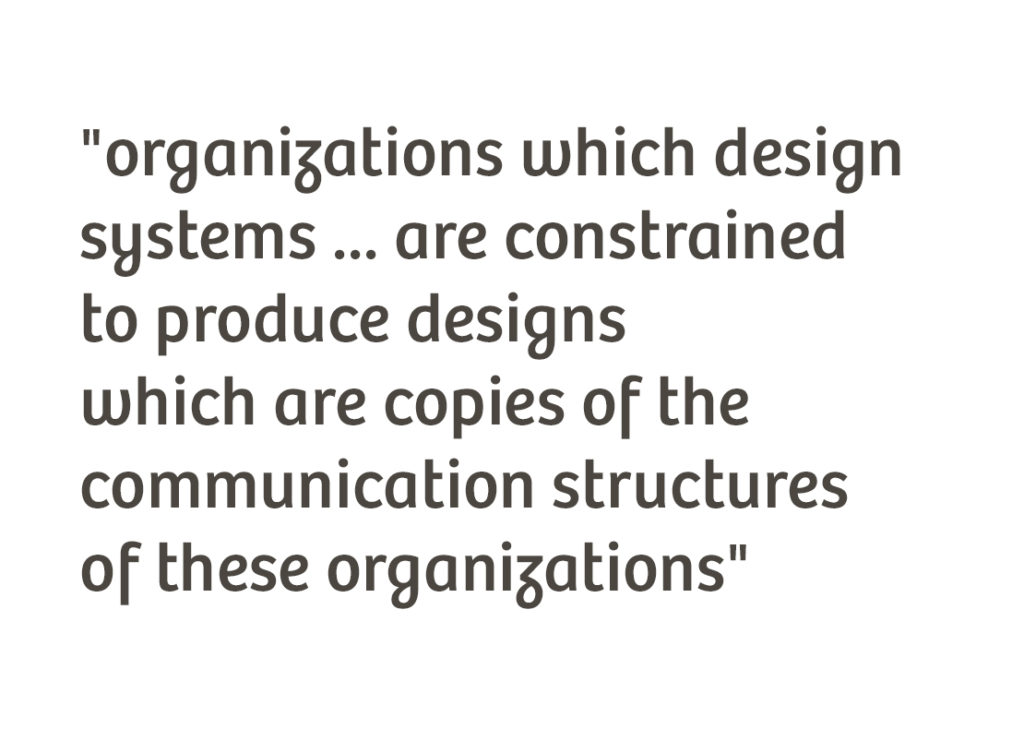What It Is:
Conway’s Law is an observation made by computer programmer Melvin Conway in 1968. The law states:
“Organizations which design systems are constrained to produce designs which are copies of the communication structures of these organizations.”
In simpler terms, it suggests that the structure of an organization directly influences the design and architecture of the systems it creates. If teams within an organization don’t communicate effectively, the systems they build are likely to reflect those communication patterns.
How to Use It:
Using Conway’s Law in Agile Coaching:
- Team Structure and System Design:
- Assess the team structure and communication patterns within the Agile software delivery team. Understand how teams are organized, how they communicate, and how these factors might influence the design of the software system.
- Cross-Functional Collaboration:
- Promote cross-functional collaboration within the team. Agile methodologies often emphasize cross-functional teams that include members with different skills. This helps break down silos and encourages better communication and collaboration.
- Communication Channels:
- Analyze communication channels within the organization. Are there clear lines of communication? Do teams interact effectively? Understanding these dynamics can help identify potential challenges in system design.
- Organizational Changes:
- If needed, advocate for organizational changes that align with the desired system architecture. If the current organizational structure hinders effective communication and collaboration, consider proposing changes to better support Agile practices.
- Scalability Considerations:
- Consider how the team’s structure and communication patterns might impact scalability. If the team is expected to grow, ensure that the organization’s structure can accommodate growth without introducing unnecessary complexity into the system.
Understanding and leveraging Conway’s Law can help Agile coaches and teams design systems that align with the desired communication and collaboration patterns. By recognizing the influence of organizational structure on system architecture, teams can make informed decisions to enhance overall effectiveness and delivery.
References:
- Original Paper “How Do Committees Invent?” by Melvin Conway (1968):
- Conway’s original paper introduces the concept of his law. Reading the original work provides a deep understanding of his observations and the implications of Conway’s Law. “How do Committees Invent?”, Datamation 14 (April 1968)
- Books and Articles on Agile and Organization Design:
- Explore books and articles that discuss the intersection of Agile methodologies and organizational design. These resources often delve into Conway’s Law and its practical applications in modern software development.
- Interviews and Talks by Melvin Conway:
- Look for interviews and talks by Melvin Conway where he discusses his law, its origins, and its relevance in today’s software development landscape. Conway has shared valuable insights in various forums.
Visit the Agile Coach’s Toolkit for more definitions, models, theorems and stuff.

